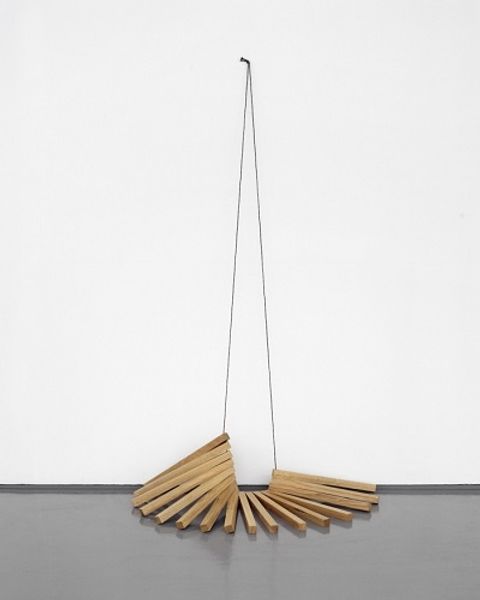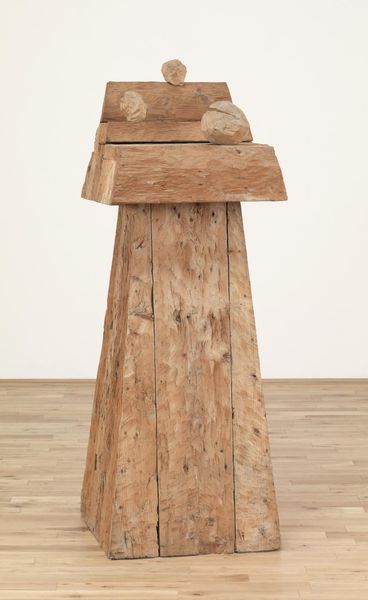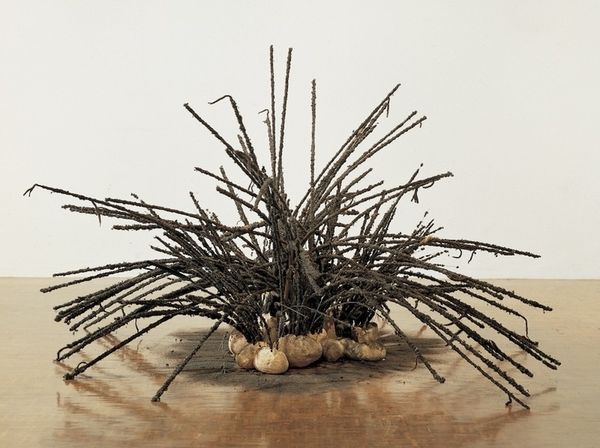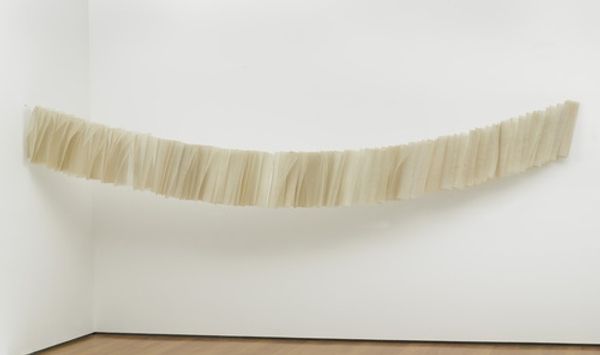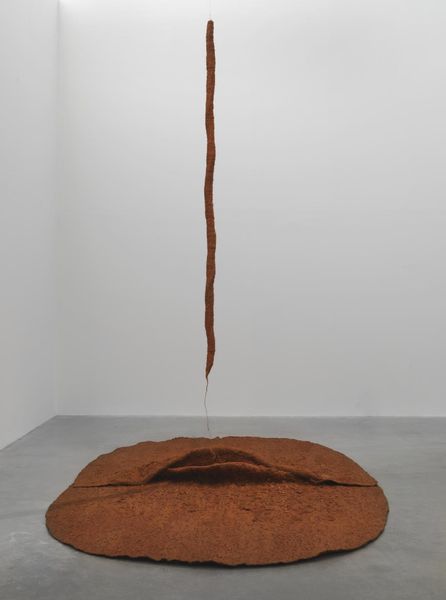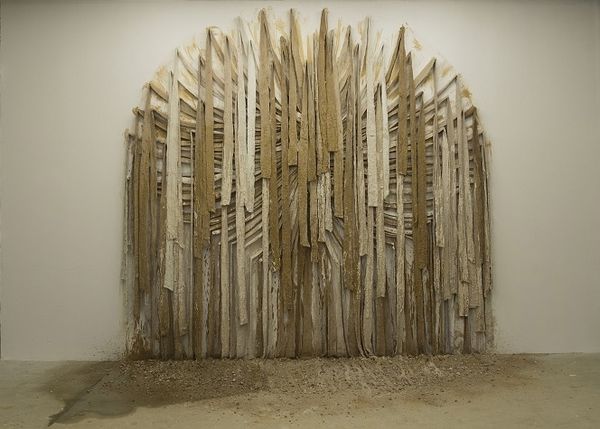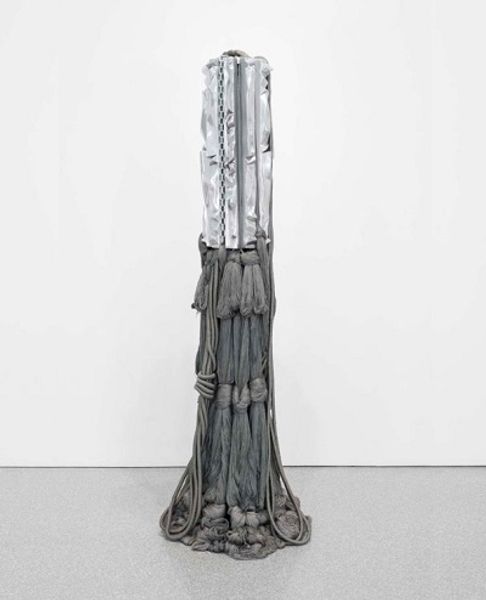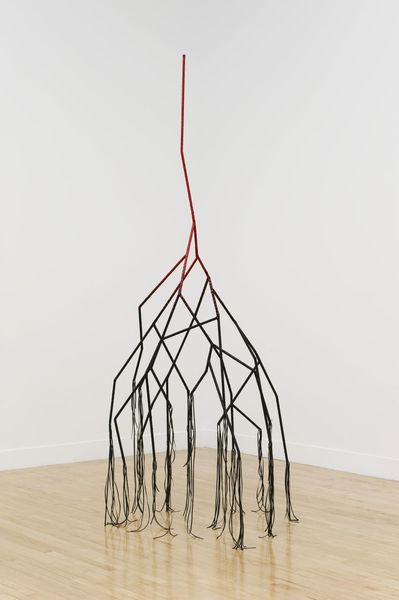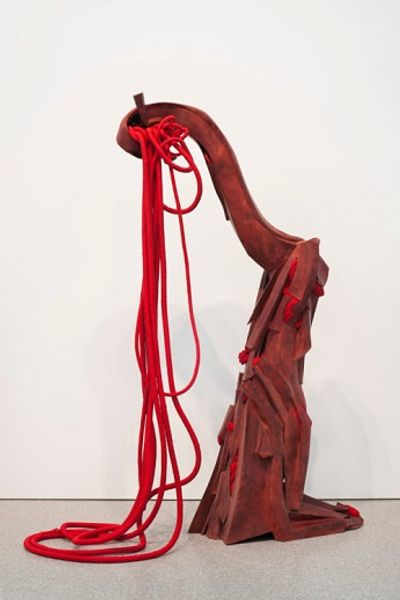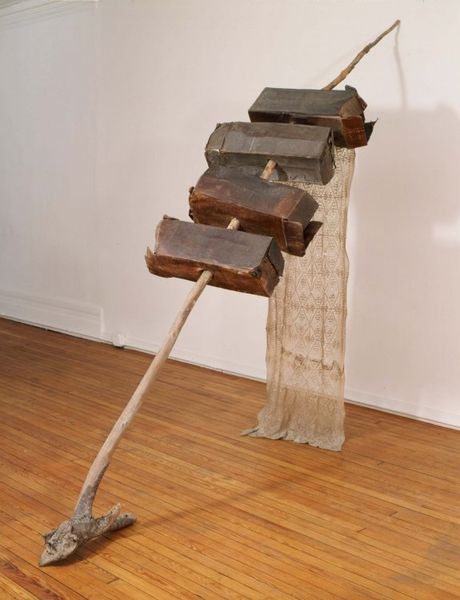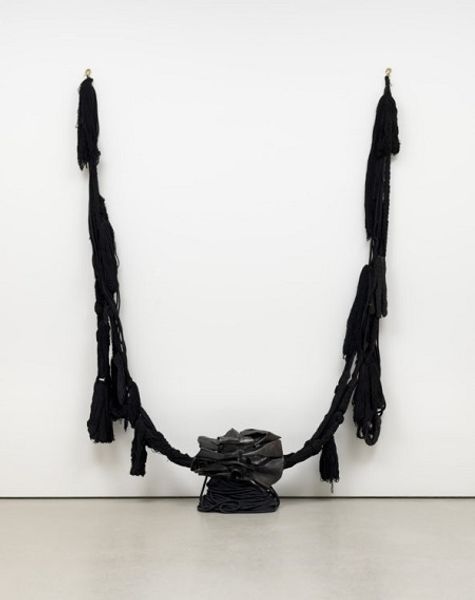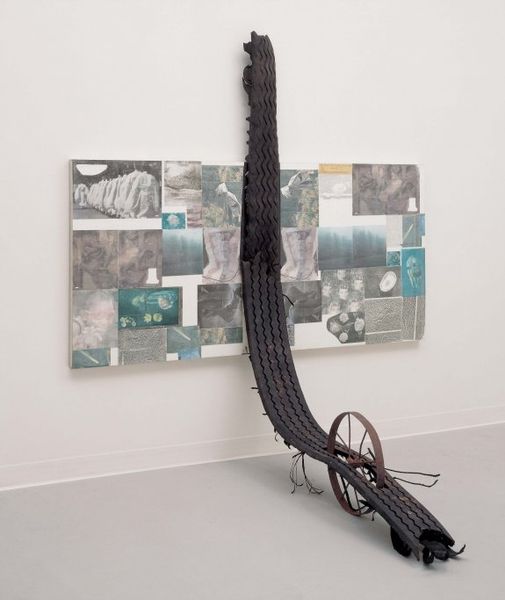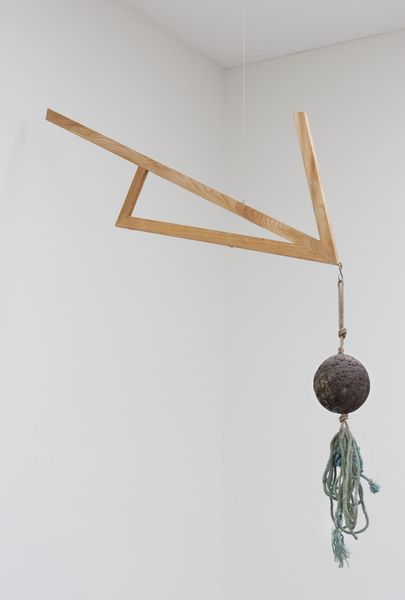
Dimensions: unconfirmed: 2620 x 3130 x 1140 mm
Copyright: © The estate of Mario Merz | CC-BY-NC-ND 4.0 DEED, Photo: Tate
Curator: Mario Merz's "Lingotto" presents us with a fascinating study in contrasting materials. Look at the rough-hewn branches and the industrial metal supports. Editor: It has such a primal quality, doesn't it? The bundle of sticks reminds me of ancient shelters or offerings. Curator: Merz often incorporated organic materials to explore the tensions between nature and industrial production. The way these branches are stacked and bound speaks to the labor involved in its creation. Editor: The tripod evokes a ritualistic object, perhaps an altar. The box on top...is it a vessel? What was meant to be placed there? Curator: That box highlights the concept of shelter, a recurring theme in Merz's work. He was interested in simple structures, the kind that anyone could build with available materials. Editor: I see now, the symbolism becomes clearer. It's about basic human needs, about building, and belonging. A poignant commentary on the human condition. Curator: Precisely. By using these raw materials, Merz elevated everyday processes to the realm of art. It makes me think about the structures that we create as societies. Editor: It is a compelling, if somewhat understated, piece that invites us to reflect on our primal selves. Curator: Yes, and on the social and material infrastructures we construct.
Comments
Join the conversation
Join millions of artists and users on Artera today and experience the ultimate creative platform.
tate 6 months ago
⋮
Lingotto was made in the year that Merz began exhibiting with other Arte Povera artists, and the bundles of brushwood are characteristic of the group’s use of humble materials. A block of beeswax resting on a steel framework evokes a single gold bar – ‘lingotto’ means ‘ingot’ in Italian. Lingotto is also the district of Merz’s home city of Turin where the Fiat factory was located, a modernist yellow building in which his father worked. These disparate references combine to suggest contrasts between poverty and luxury, rural and urban life. Gallery label, August 2011
